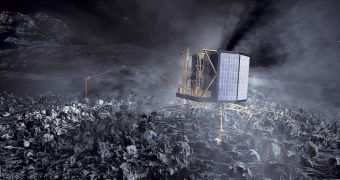The European Space Agency's comet hunter Rosetta has been in hibernation for the past couple of years. The probe was launched almost a decade ago and it is now getting close to comet 67-P/Churyumov-Gerasimenko, its main target.
Rosetta has flown around Mars and Earth a few times to pick up some speed thanks to gravity assist, and it has gotten close to a few asteroids, but it is only now getting ready to complete the mission it was built for.
The probe will be coming out of hibernation soon, in January next year. Its alarm clock (no kidding) is set for 10:00 GMT on January 20, 2014. Rosetta was put into deep sleep for the past few years to preserve energy and because it had no targets during that period.
"We are very excited to have this important milestone in sight, but we will be anxious to assess the health of the spacecraft after Rosetta has spent nearly 10 years in space." Fred Jansen, ESA’s Rosetta mission manager, said.
After it wakes up, it will begin using its 11 scientific instruments, but it will be a few more months before it catches up and lines up with the comet, in August next year. A few months later, in November 2014, it will deploy its lander, dubbed Philae, which will set foot on the four-kilometer (2.4-mile) comet.

 14 DAY TRIAL //
14 DAY TRIAL //